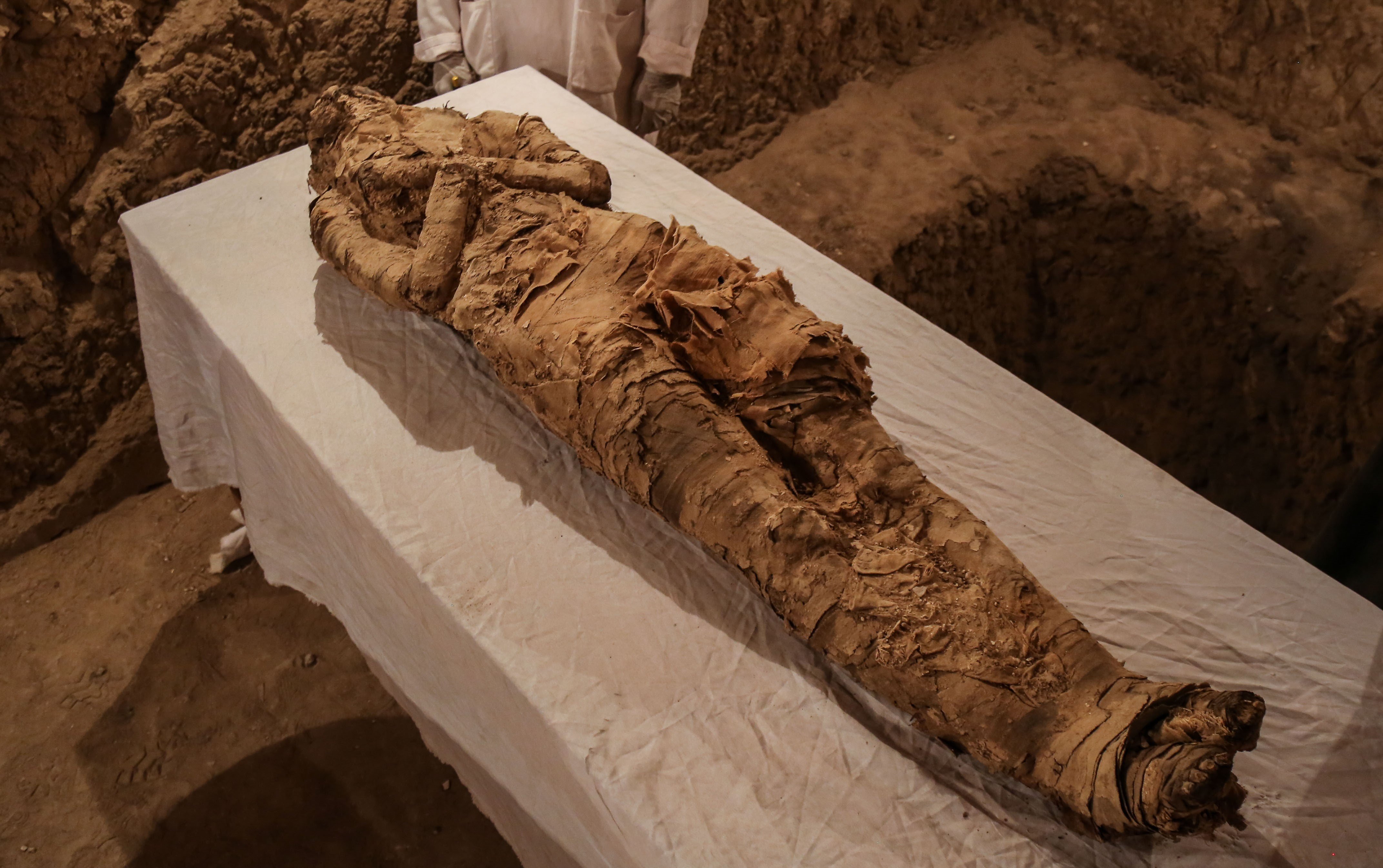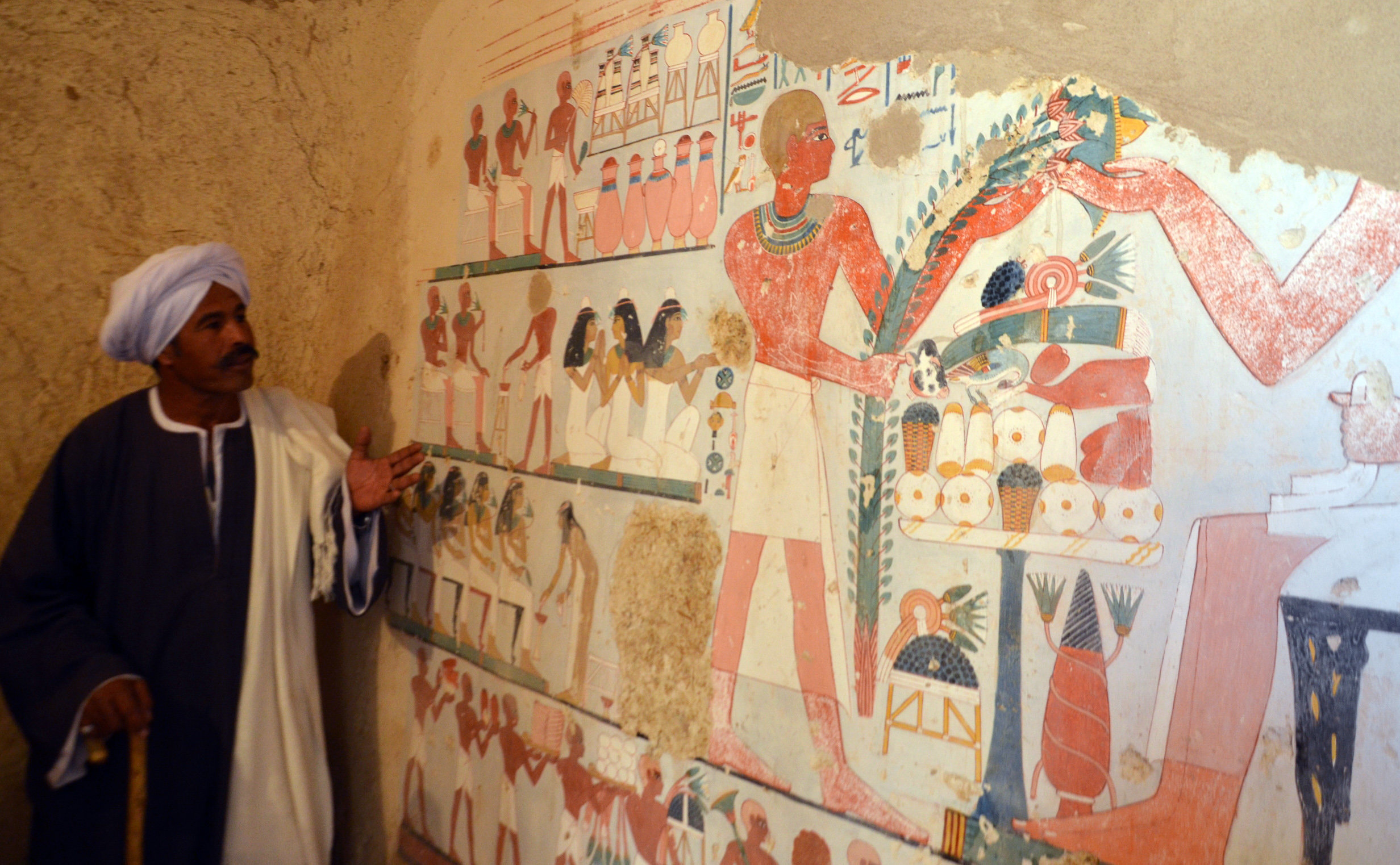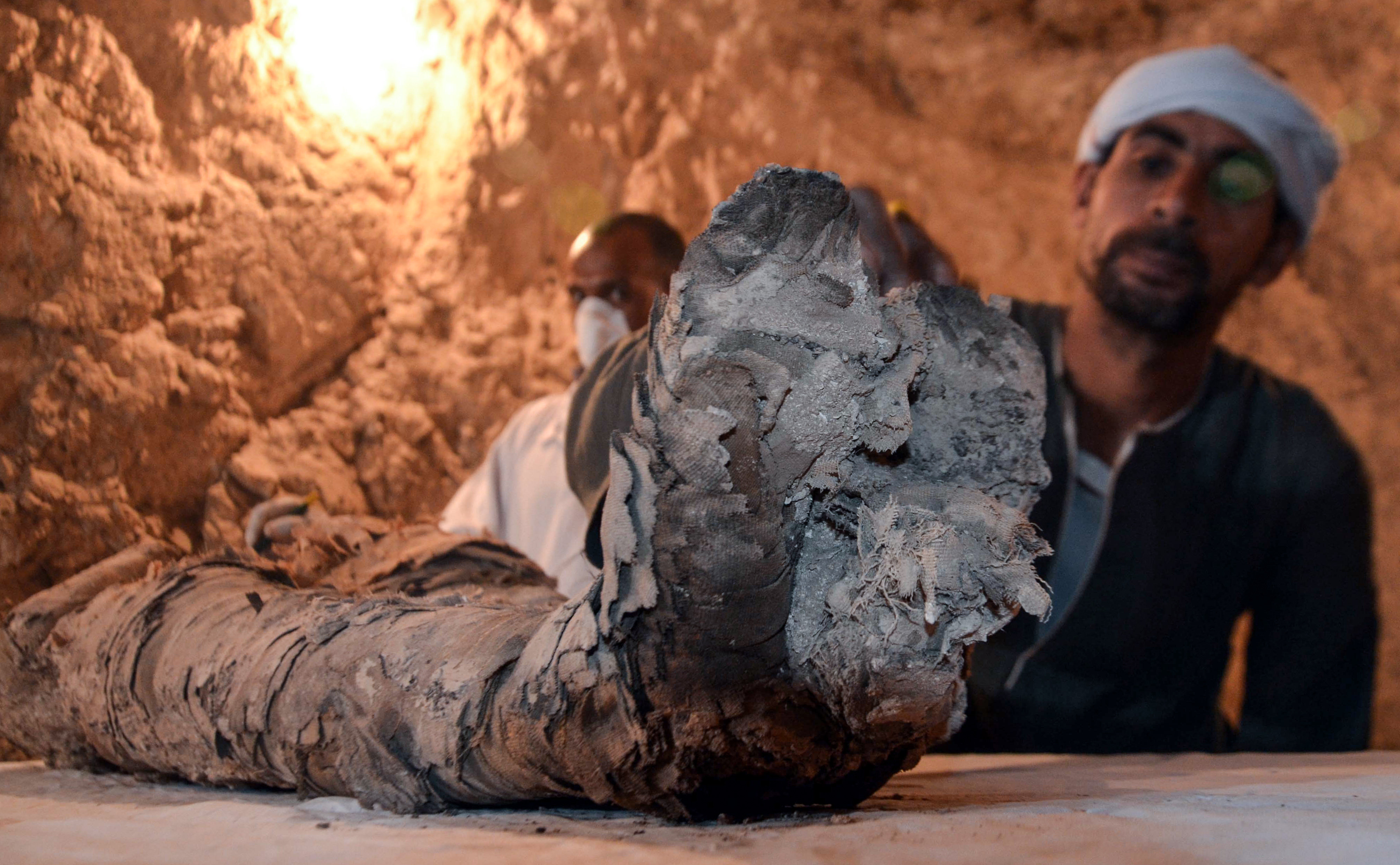The mummified body of a top Egyptian official has been discovered in an unexplored tomb in the Nile city of Luxor.
The linen-wrapped body was found alongside a trove of painted wooden funeral masks, wall inscriptions, paintings and several hundred carved statues dating back around 3,500 years, between the reigns of King Amenhotep II and King Thutmose IV.
A large painted mural is largely intact, with Egyptologist Zahi Hawass telling The Independent: “It’s really beautiful and typical 18th dynasty. It looks like it was painted yesterday.”


The artefacts were found in unexcavated two tombs located in the Draa Abul Naga necropolis on Luxor’s west bank, flagged by German archaeologist Frederica Kampp in the 1990s.
Khaled al-Anani, of the Ministry of Antiquities, told the Associated Press on Saturday: “It’s truly an exceptional day. The 18th dynasty private tombs were already known, but it’s the first time to enter inside the two tombs.”
Egypt’s relics are a draw for foreign visitors and authorities hope new finds can help attract more as a way to help revive tourism hit by unrest that followed the ouster of former President Hosni Mubarak in 2011.
In September, Egyptian archaeologists announced the discovery of a tomb of a prominent goldsmith who lived more than 3,000 years ago, unearthing statues, mummies and jewellery in the latest major find near Luxor.
